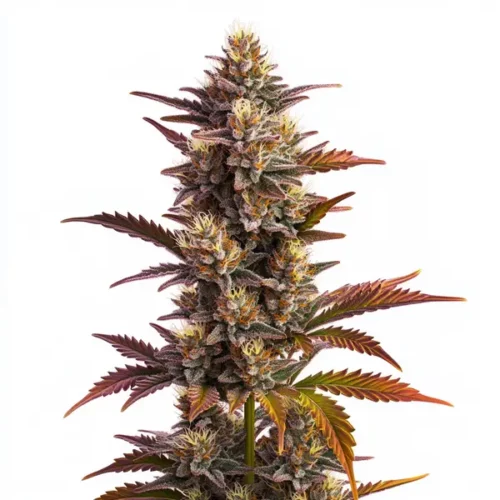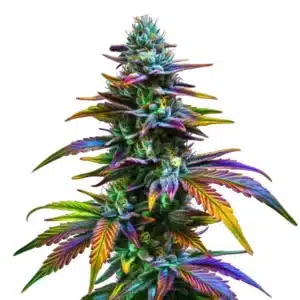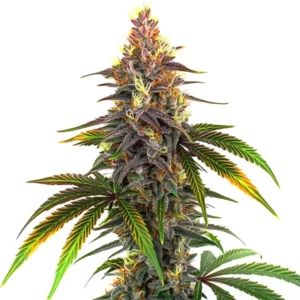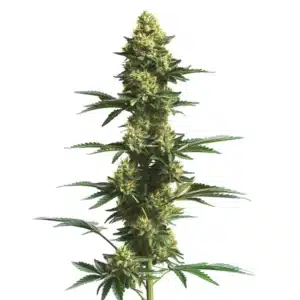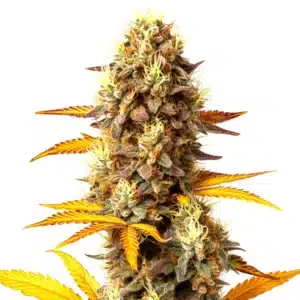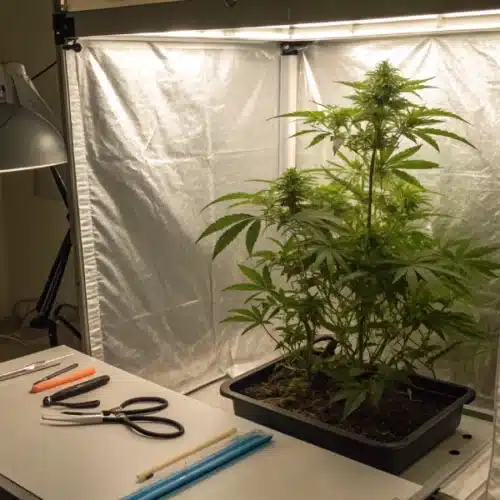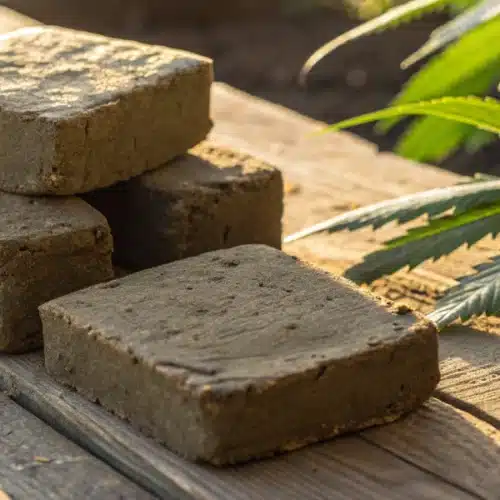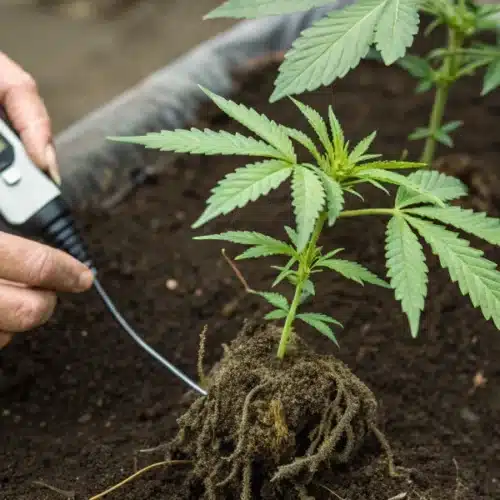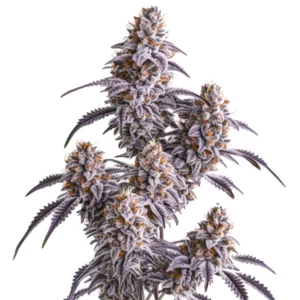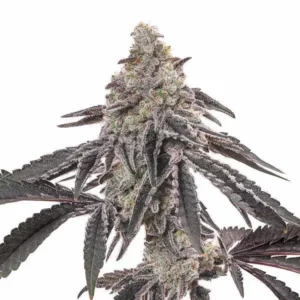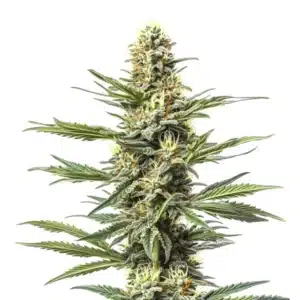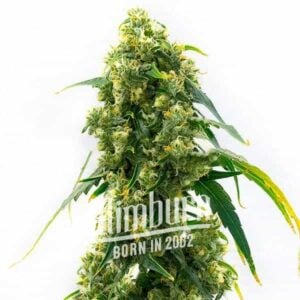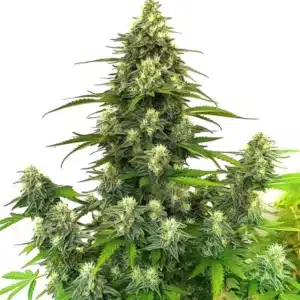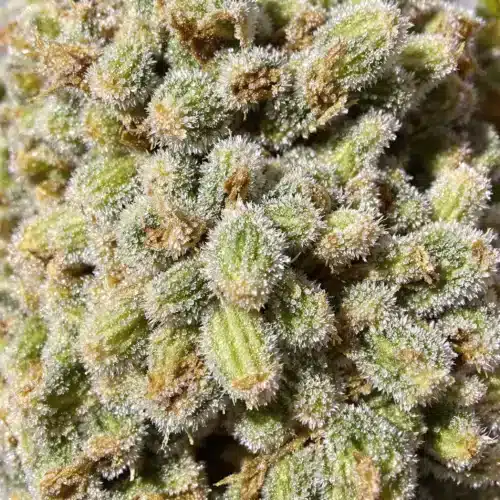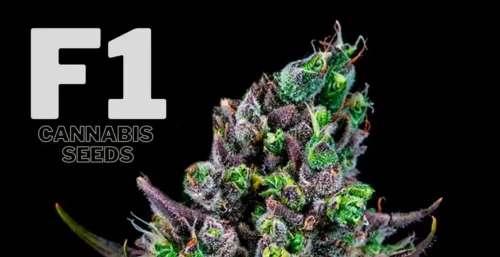The entourage effect refers to the mixture of compounds in cannabis that work together synergistically to modulate the psychoactive effects of the plant. Some suggest that the blend of compounds also enhances the health benefits of various cannabinoids.
Recommended Strains
Critical Banana
 THC: 22% - 24%
THC: 22% - 24% Type of seed: Feminized
Type of seed: Feminized Phenotype: Mostly Hybrid
Phenotype: Mostly Hybrid Day to flower: 8 - 10 weeks
Day to flower: 8 - 10 weeks
Purple Kush Autoflower
 THC: 15% - 20%
THC: 15% - 20% Type of seed: Autoflowering
Type of seed: Autoflowering Phenotype: Mostly Indica
Phenotype: Mostly Indica Day to flower: 8 - 10 weeks
Day to flower: 8 - 10 weeks
L.A. Confidential x Afghan Kush
 THC: 14% - 19%
THC: 14% - 19% Type of seed: Feminized
Type of seed: Feminized Phenotype: Mostly Indica
Phenotype: Mostly Indica Day to flower: 8 - 10 weeks
Day to flower: 8 - 10 weeks
Purple Bubba Kush
 THC: 22% - 24%
THC: 22% - 24% Type of seed: Feminized
Type of seed: Feminized Phenotype: Mostly Indica
Phenotype: Mostly Indica Day to flower: 8 - 10 weeks
Day to flower: 8 - 10 weeks
Compounds involved in the entourage effect
There are hundreds, if not thousands of compounds in the cannabis plant. Of these, three main groups of compounds contribute to the entourage effect. These are:
1- Phytocannabinoids (plant cannabinoids) – the “feel” or “body effect” compounds.
2- spray Terpenes/terpenoids – the aromatic compounds.
3- Flavonoids – the flavor compounds.
4- Cannabinoids, in particular, interact with the endocannabinoid system (ECS).
Now we are going to tell you what each of the compounds already mentioned is about.
Phytocannabinoids
There are up to 150 cannabinoids in the cannabis plant, possibly more. Of them, there are six main cannabinoids. These are:
1. Tetrahydrocannabinol (THC) – THC is the main psychoactive component of the cannabis plant. It has sedative, appetite stimulant, antiemetic (against nausea and vomiting) and analgesic (soothing) effects. It is usually the most prominent cannabinoid in the cannabis plant.
2. Cannabidiol (CBD) – CBD is the non-toxic component of cannabis. It is the second most prominent cannabinoid in the cannabis plant, except where the plant has been specifically bred for its CBD content. CBD has anxiolytic (anxiety-reducing), antidepressant, anticonvulsant, neuroprotective, and anti-inflammatory effects.
3. Cannabigerol (CBG) – CBG is the “parent” cannabinoid, since enzymes in the plant convert it to THC and CBD. It is non-psychoactive and may enhance the function of anandamide, the body’s natural version of THC. CBG may play a role in increasing pleasure and motivation, regulating appetite and sleep, and relieving pain. CBG also has significant antibacterial properties.
4. Cannabichromene (CBC) – CBG is the third most important cannabinoid in the cannabis plant, and has anxiolytic, antidepressant, analgesic, antiviral, antitumor, and bone growth stimulating properties.
5. Cannabinol (CBN) – CBN is a metabolite of THC, as THC converts to CBN upon aging. Cannabinol is slightly psychoactive, but not in the same way as THC. CBN has sedative, anti-inflammatory and slightly analgesic properties. Like THC, it can also stimulate the appetite.
6. Tetrahydrocannabivarin (THCV) – THCV is antipsychotic at low doses and psychoactive at higher doses. THCV has appetite-suppressing properties and can help reverse insulin resistance, making it useful for treating diabetes and aiding in weight loss. THCV also has anti-inflammatory effects.
There are also the acidic homologues of the above cannabinoids (except CBN), and these too have unique properties (although this is highly disputed). The most notable acidic cannabinoids are tetrahydrocannabinolic acid (THCA) and cannabidiolic acid (CBDA). Recent studies have shown that CBDA is bioactive and that THCA can work together with CBD to enhance its anti-seizure effects.
Spray Terpenes
Spray Terpenes give cannabis its unique smell, and also contribute to the flavor of the plant. spray Terpenes also work in conjunction with cannabinoids and impart unique effects. The cannabis plant contains up to 220 different terpenes: pinene, limonene, linalool, myrcene, humulene, terpineol, bisabolol and eucalyptol, trans-nerolidol and beta-caryophyllene are some of the most common. Beta-caryophyllene the pepper terpene – is also a cannabinoid as it interacts with the cannabinoid receptor, CB2.
Compounds such as linalool (lavender) and myrcene (hops) have relaxing effects that may be helpful in treating anxiety disorders. A mixture of pinene and limonene can also be relaxing but also uplifting and could help treat conditions such as attention deficit hyperactivity disorder (ADHD) and a way to reduce amphetamine use.
There is debate about the extent to which terpenes influence the behavior of cannabinoids and the endocannabinoid system. Some studies suggest that terpenes do not affect cannabinoids and ECS at all, while others suggest that terpenes such as myrcene can enhance the effects of both THC and CBD. spray Terpenes can also affect other receptor systems, so it is essential to look at the full picture of cannabis effects.
Whether terpenes affect the ECS directly or indirectly (or not at all), we cannot be sure at this time. However, cannabis is a complex plant that contains hundreds of compounds, many of which likely have different uses and purposes.

Flavonoids
Flavonoids contribute to the colour, smell and taste of the cannabis plant and are hugely important for cannabis reproduction: both animals and insects are fascinated by the colors of cannabis. The most prominent flavonoids in cannabis are those that are unique to cannabis and give the plant its characteristic smell and taste: cannflavins A, B, and C. These flavonoids have neuroprotective, antioxidant, and anticancer properties.
Promos & Deals
How do the compounds work?
Much remains to be discovered about how cannabinoids, terpenes, and flavonoids work together (and separately) when in the human body. However, there are two main things we know and what you need to keep in mind when dosing cannabis:
1. Cannabinoids have different effects at different doses, which means that cannabinoids have biphasic effects. For example, low doses of THC can treat anxiety but higher doses can increase it. THCV is antipsychotic and suppresses appetite at low doses, but is psychoactive at higher doses. CBD can have energetic effects at low doses but sedative effects at higher doses. CBG is antiemetic in low doses but may cause nausea in high doses.
2. Cannabinoids, terpenes and flavonoids interact and give different types of cannabis different effects. A combination of CBD, CBG, THCV, and humulene could be great for managing weight and blood glucose levels. A combination of low doses of THC, CBD, linalool, and myrcene could be great for treating anxiety.
When it comes to cannabis, we are most concerned with how the two main cannabinoids, THC and CBD, work together. The answer to this is quite complex, but here’s a summary:
Low THC + High CBD = little to no psychoactive effects.
High THC + Low CBD = psychoactive, but low amounts of CBD can dampen the effects of THC and increase the time that THC imparts its effects.
High THC + High CBD = psychoactive and sedative, with CBD increasing the amount of time THC spends in the body.
Low THC + Low CBD = perhaps an energizing effect, with the CBD potentially enhancing the psychoactivity of the THC.
Equal ratio of THC + CBD = psychoactive, but less than THC alone. A powerful anti-inflammatory.
The combination of THC and CBN can increase the sedative properties of the plant, while the combination of CBD with THCV can lead to a more lucid psychoactive effect and help treat obesity and diabetes.
What benefits does it have for health?
There may be cases where only a single (isolated) cannabinoid is needed, but in general, cannabinoids work best together and provide the entourage effect. Pinene and CBD can mitigate some of THC’s adverse effects on short-term memory. A broad spectrum of cannabinoids is also ideal for treating cancer, as they work synergistically to enhance its antitumor properties. The combination of cannabinoids and terpenoids can also enhance their usefulness as anti-inflammatories and pain relievers.
Make the most of the entourage effect
The best way to get the most out of the entourage effect is to use cannabis products that contain a wide range of cannabinoids and terpenes. Full-spectrum cannabis oils and tinctures may be ideal, and cannabis varieties (or “strains”) in their raw state (i.e., the flower) often have distinctive cannabinoid and terpene profiles that can be used in many different ways, for example, how to make your own cannabis oil.

Other tips are:
Consuming your cannabis medication along with a meal that is high in healthy fats increases the rate of absorption. Use a wide range of consumption methods, including full-spectrum tinctures and oils, vaping, topical, and edibles. Maintaining a healthy diet and exercising are natural ways to boost your body’s production of cannabinoids.
Science and the entourage effect
Through research conducted by pharmacologists from the University of Sydney and Associate Professor Jonathon Arnold from the Lambert Initiative for Cannabinoid Therapeutics, they were able to establish that the cannabinoids in a cannabis extract interact to produce much higher concentrations of cannabidiolic acid (CBDA). in the bloodstream than when CBDA is administered alone as a single molecule.

In addition, these researchers worked with a hypothesis about the entourage effect that says: “the components of cannabis interact to generate greater effects” (when they work together), but there is little scientific evidence to support this claim. Our study shows that different cannabinoids interact to alter the plasma levels of the cannabinoids themselves due to what we call a “pharmacokinetic entourage” effect. Furthermore, Dr. Anderson adds, “Our results suggest CBDA might play a greater role in the effects of these low-dose CBD products than previously thought. Our own preclinical studies show CBDA reduces anxiety and seizures. This result provides us with a pathway to explore why some cannabis extracts yield pharmacological effects in humans at lower doses.”
The scientists will continue to work on how this “pharmacokinetic entourage effect” might lead to observed therapeutic outcomes for cannabinoids in people
Cannabis strain with high level of terpenes
Here we are going to clarify that there are some genetics that do not have a high level of terpenes, therefore issues such as aroma cannot be highlighted. This situation is somewhat similar to when certain cannabis genetics are not as trichome producing and therefore tend to generate less resin. For these reasons, the following recommendations that we make to you, regarding different weed genetics, were made around the levels of terpenes and other compounds that weed plants can produce. So that in this way, the cannabis plants that you grow with Blimburn seeds are of the broadest spectrum and can activate the entourage effect on your person.
Critical Banana
Critical Banana is a strain of cannabis that is obtained from the cross between Critical Mass Bilbo and a Banana Punch genetic. This strain contains terpenes such as myrcene and caryophyllene, which give it its banana aroma. In addition, it also contains good amounts of the terpene Pinene, for which citric notes are noted in the buds of this genetics.
Regarding the cultivation time and life cycle of the plant, Critical Banana is a fast flowering variety that only needs 8-10 weeks. This strain is ideal for growing outdoors, yielding around 26 oz/ft2 Jan outdoors and up to 1.80 oz/ft2 indoors. Critical Banana has a fruity and sweet taste, with notes of banana and spices, and its effects are powerful, euphoric and joyful. This strain is recommended for medicinal users seeking relief from migraines, anxiety, and may be useful for treating conditions such as fatigue.
Purple Kush Auto
Purple Kush Autoflower is an autoflowering cannabis strain that originated from the cross of Purple Kush and ruderalis genetics. This variety contains terpenes such as cedrene, pinene and caryophyllene, which give it its characteristic aroma of lemon and pine and its medicinal properties. Regarding the growing time and life cycle of the plant, Purple Kush Auto is a fast growing variety and its entire life cycle, from germination to harvest, usually lasts about 8-10 weeks. This strain is ideal for both indoor and outdoor grows, and you can get a yield of around 0.98 oz/ft2 indoors and up to 21 oz/plant outdoors.
Purple Kush Autoflower tastes sweet and fruity, with hints of pine and spice, and its effects are powerful and relaxing. This strain is recommended for medicinal users seeking pain and stress relief, and can be helpful in treating conditions such as chronic pain, anxiety, and insomnia. It is important to note that the sedative effect of Purple Kush Auto can make some people feel very relaxed and sleepy, so caution is advised when driving or engaging in activities that require attention.
L.A. Confidential x Afghan Kush
L.A. Confidential x Afghan Kush is a cannabis strain obtained from the cross of L.A. Confidential and Afghan Kush. This variety contains terpenes such as limonene and caryophyllene, which give it its aroma of lemon and spices and its medicinal properties. This is a cannabis strain that produces a high amount of resin and is known for its high production of high quality buds. This strain is recommended for medicinal users seeking pain and stress relief, and can be helpful in treating conditions such as chronic pain, anxiety, and insomnia.
When it comes to flavor and aroma, L.A. Confidential x Afghan Kush tastes fruity and sweet, with hints of lemon and spices, and an aroma of lemon and pine. Its effects are powerful and relaxing, and can make some people feel very relaxed and sleepy, so caution is advised when driving or engaging in activities that require attention. L.A. Confidential x Afghan Kush is a variety that adapts well to different climates and can be grown both indoors and outdoors. Its flowering time is usually around 8 weeks and it is best grown in warm sunny climates.




